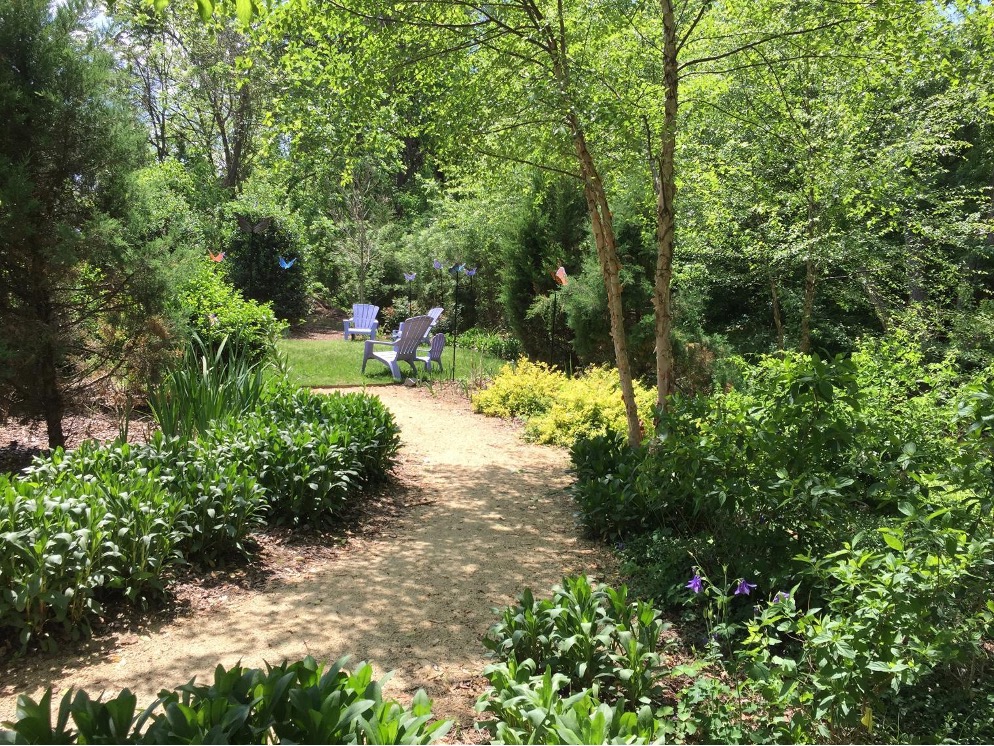By Porter Aichele, Healing Gardener
Nature has extraordinary healing powers. That claim is supported by scientific research and even more by what one sees, smells, hears, touches and feels as you walk through the Healing Gardens at Wesley Long Hospital in Greensboro, NC, a member of the NC Native Plant Society. Planned by volunteers and funded with private donations, many of which were memorial gifts, the gardens are a gift from the Greensboro community and a peaceful refuge for patients, their families and the hospital staff.
A Healing Gardens instead of a Parking Garage
A small group of former patients, family members of patients, and community leaders made the dream of a healing garden a reality. Chair Mary Magrinat and Landscape Architect Sally Pagliai saw the protected wetland next to the Wesley Long Cancer Center as an opportunity for an extraordinary garden instead of the parking garage originally envisioned by the hospital. Mary headed up the garden development and fundraising while Sally, an internationally known landscape architect, undertook the garden design as a memorial to her late husband, who was treated at the Wesley Long Cancer Center. Many others donated funds, plants, goods and services so that the $1.3M nearly two-acre gardens could be built.
The gardens evolved in three phases over five years, beginning with a seed grant for planning in 2012. In late 2013 the city of Greensboro collaborated with project volunteers to plant the Wendover Treescape, which provides a sight and sound barrier between a busy thoroughfare and the gardens below. In the spring of 2016 the Wetland Garden was completed, followed by the Meditation Garden in mid-2017. Like all gardens, Wesley Long Healing Gardens are a work in progress, with new plantings added every year.
The landscape design subtly integrates the discrete areas of the Meditation Garden as a dynamic counterpoint to the natural abundance of the Wetland Garden. Photos make the point more vividly than words.
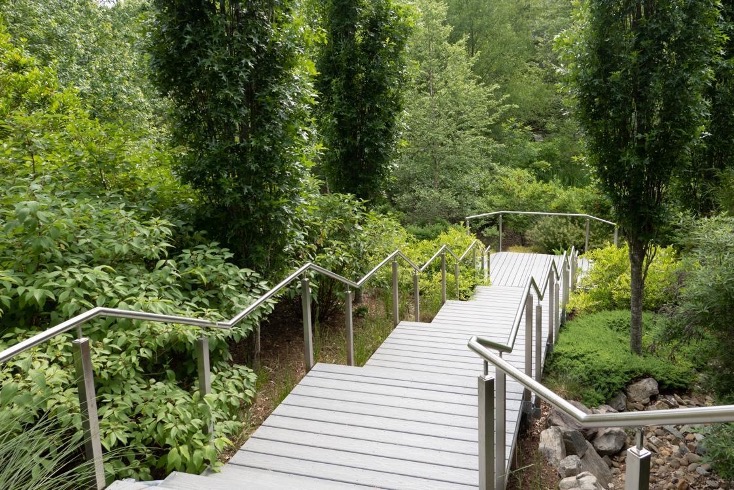
Columnar Pin Oaks line both sides of the stairs leading down into the gardens from the front of Wesley Long Cancer Center. Their dense, pencil-thin branches add vertical structure to a profusion of flowering shrubs and groundcover. The entrance promenade affords a panoramic view of the Wetland Garden, once clogged with construction debris, invasive vines and Poison Ivy, now reclaimed and replanted with native plants.
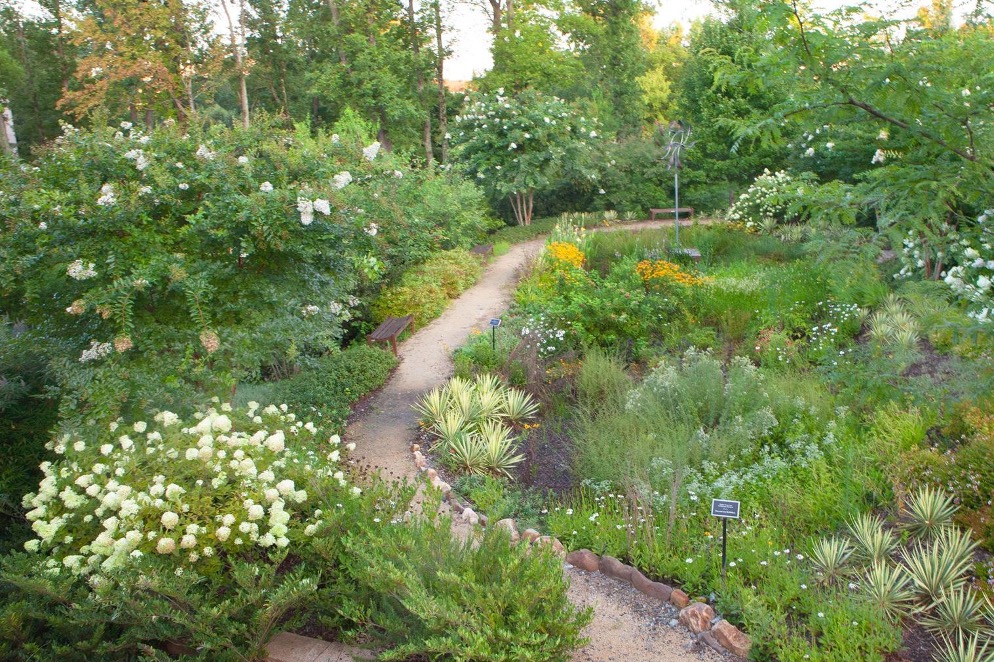
Just below a terrace with covered seating for patients and staff is the Meadow Garden that houses the biocell. In addition to serving the practical function of draining and filtering excess surface runoff, the biocell waters the Meadow Garden. With full sunlight and ample irrigation, flowering plants thrive throughout the summer. Black-eyed susans and Stokes Asters are framed by Limelight Hydrangeas, St. John’s-wort, and variegated Yucca.
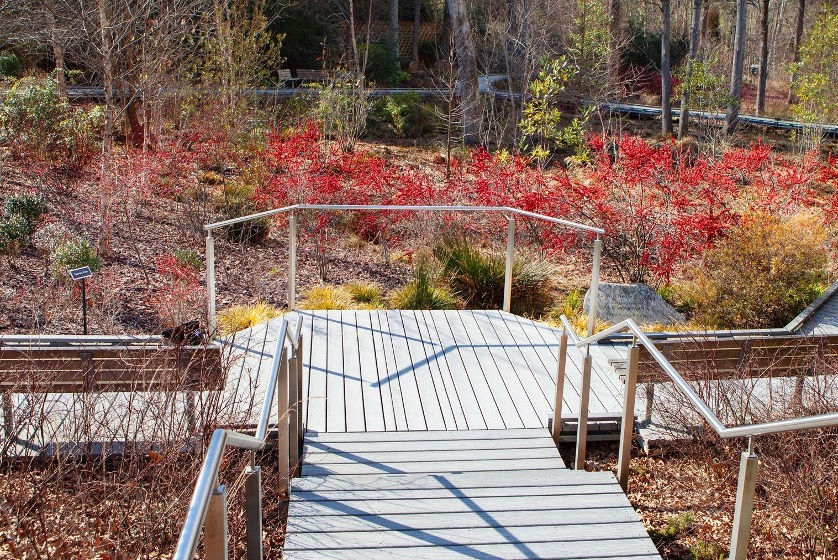
Birdhouses are scattered throughout the Wetland Garden. Instead of birdfeeders, the garden is planted with a plethora of berry-producing plants such as winterberries, chokeberries, Inkberries, serviceberries, and Beautyberries that create a natural feeding habitat for birds. In addition, plants such as milkweed, beebalm, coneflower, Stokes Aster, Joe-Pye-weed, Obedient-plant, Swamp Sunflower and many other native pollinator plants abound, making the Wetland Garden a sanctuary for birds and bees and butterflies.
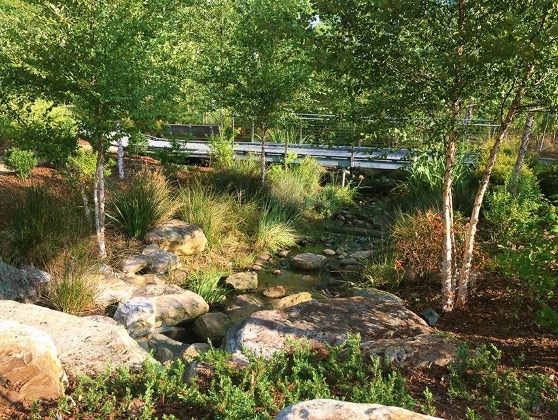
A culvert that diverts surface water from the hospital parking lot is artfully disguised by boulders that look as if they were found on site rather than put in place by a hydraulic lift. The sixty-five tons of imported boulders in the Wetland Garden are interspersed with Black Gum (Nyssa sylvatica) trees, Sweetbay Magnolias (Magnolia virginiana), Bald Cypress (Taxodium distichum), Swamp Chestnut Oak (Quercus michauxii), and other native trees that flourish in the swamp-like conditions of the protected wetland.
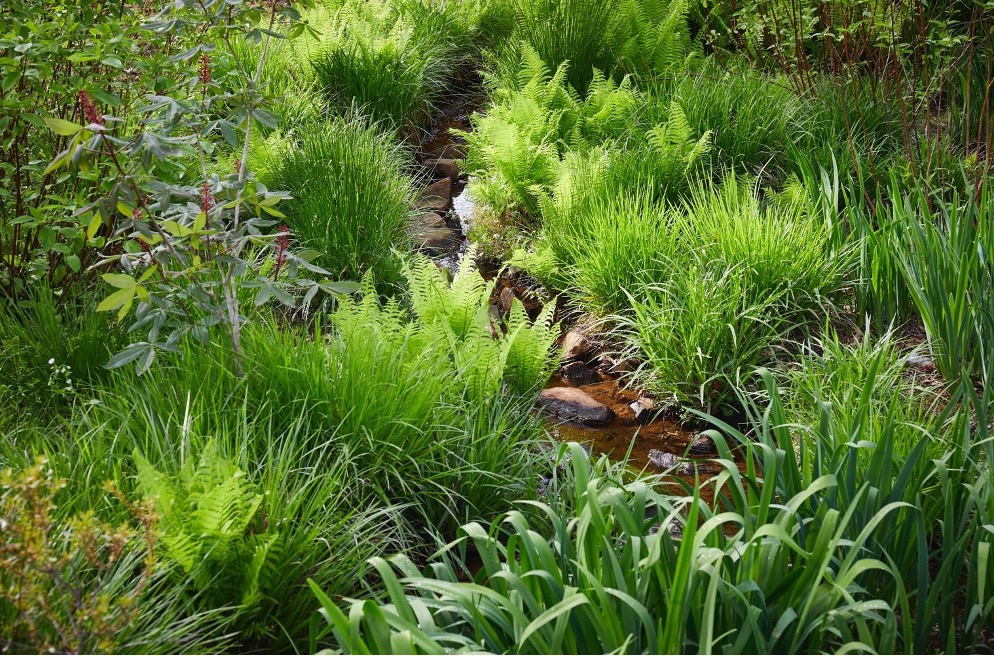
The streambed that meanders through the Wetland Garden flows into Buffalo Creek, one of the many contributing headwater streams of the Cape Fear River Basin that flows into the Atlantic Ocean. The stream is lined by ferns and flowering plants, including Southern Blue Flag (Iris virginica), Pickerelweed (Pontederia cordata), Large-flowered Hibiscus (Hibiscus grandiflorus) and Lizard’s-tail (Saururus cernuus).
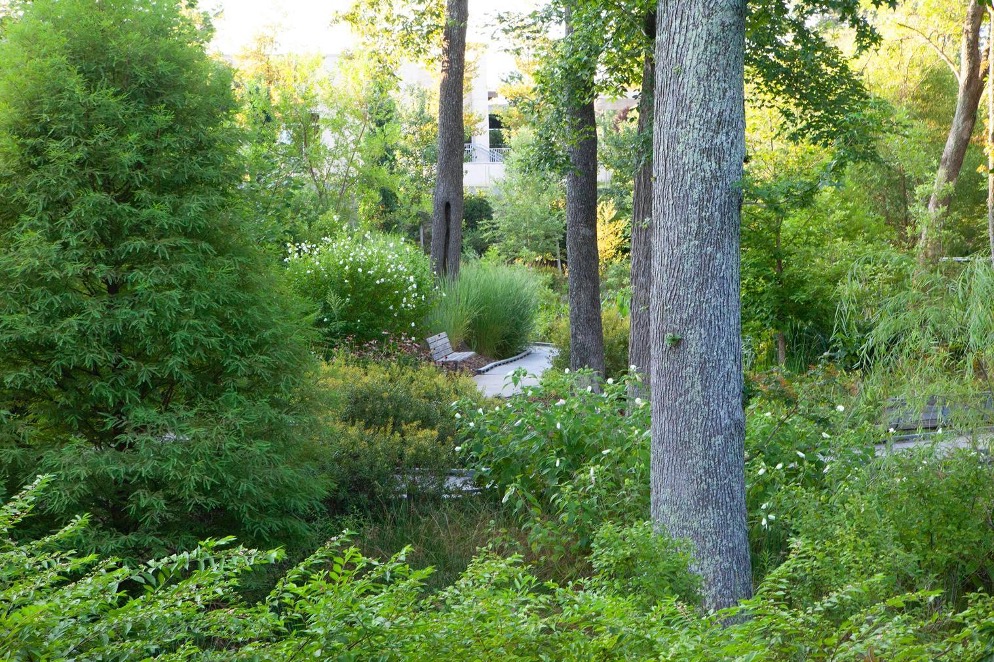
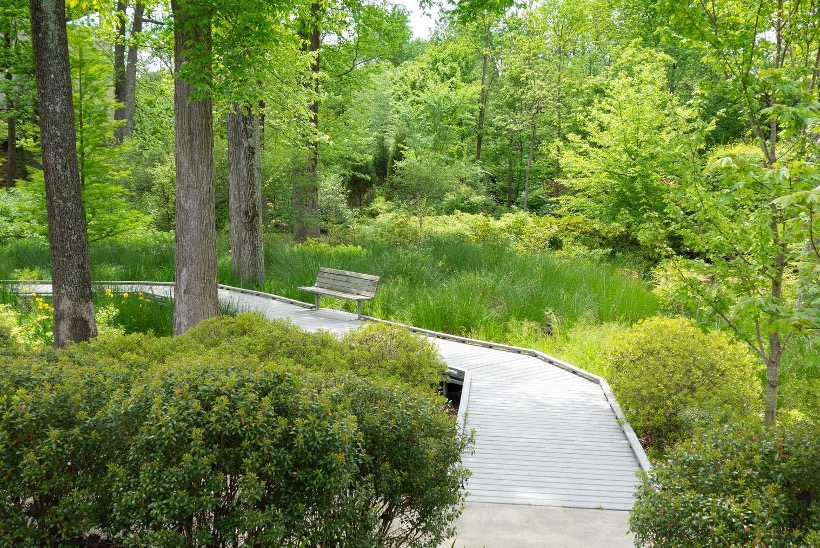
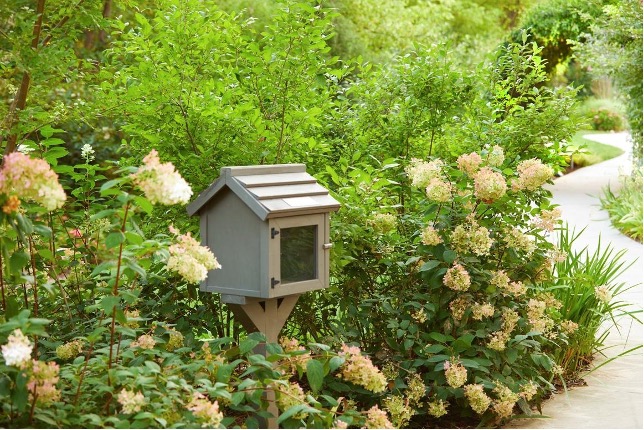
Boulder Point is a secluded spot with large boulders which invite visitors to sit down overlooking Buffalo Creek or delve into a book borrowed from the garden’s Little Library.
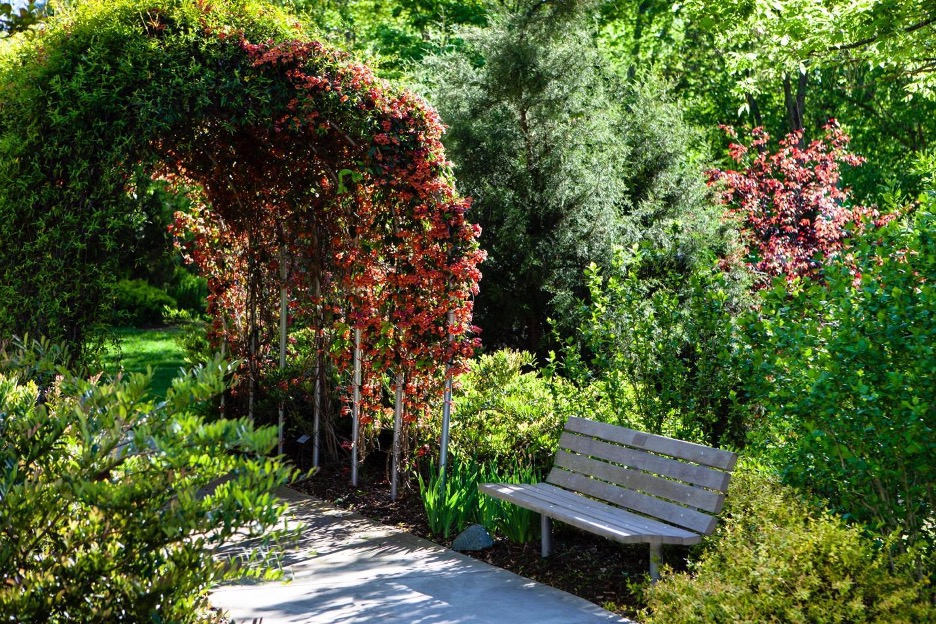
The arches are intertwined with two native vines, Carolina Jessamine (Gelsemium sempervirens) and Trumpet-creeper (Bignonia capreolata) that produce brilliant yellow and orange flowers in the spring and a welcome arbor of shade in the summer months.
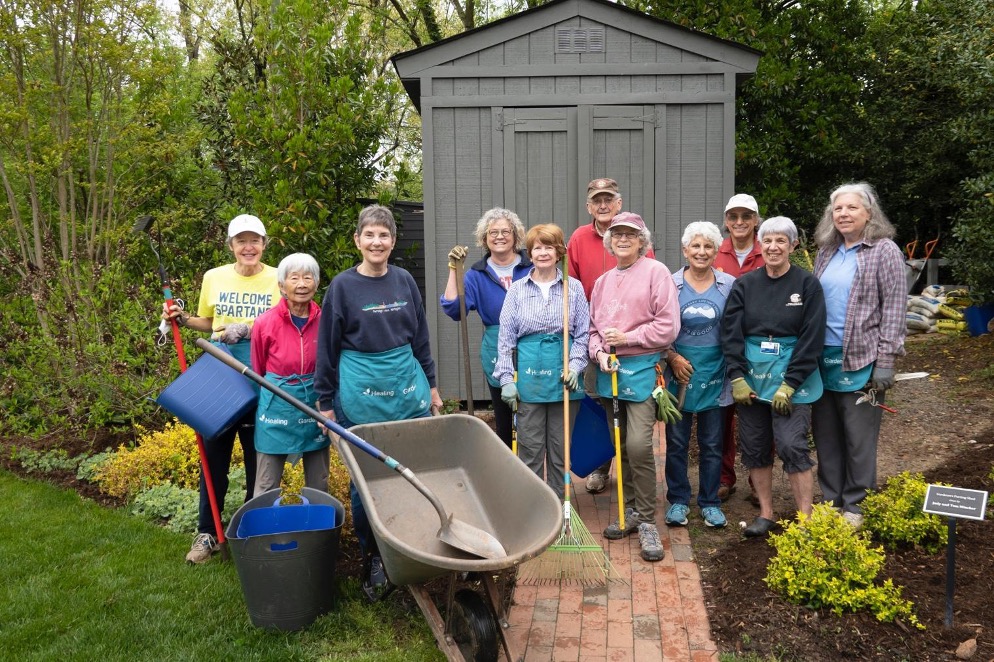
Beds of aromatic herbs are used for classes in nutrition and plant therapy. Next to the herb garden is the shed that houses the tools and supplies used by the “Healing Gardeners” who volunteer weekly to weed, plant, mulch and prune.
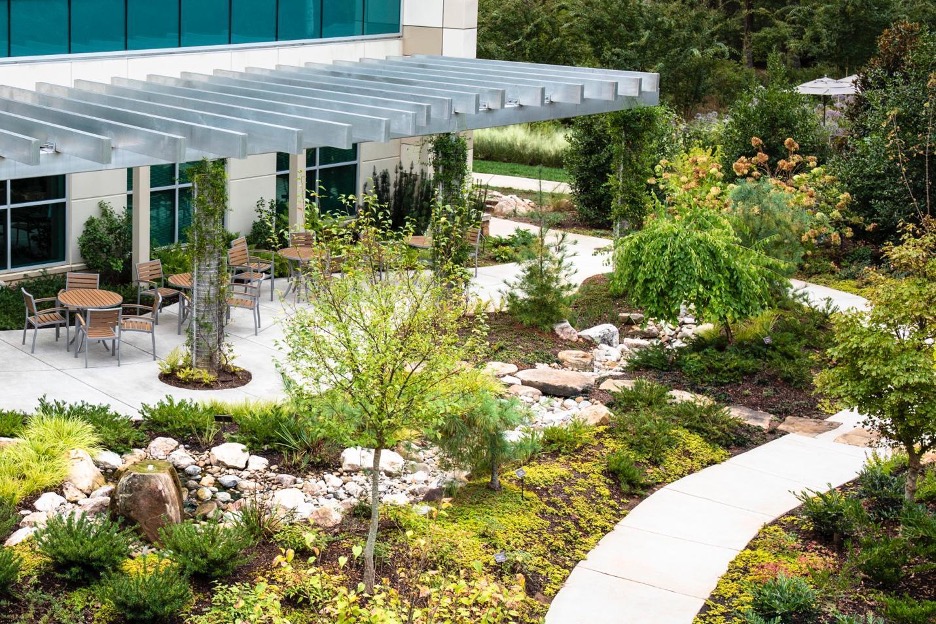
Tables and chairs in the Lower Terrace are beneath a shaded pergola, and provide a place to contemplate the artistry of a rock garden that combines elements of a traditional Japanese dry garden with a stone fountain and a variety of ground covers.
Editor’s note: The Healing Gardens at Wesley Long Hospital in Greensboro exemplify the mission of the North Carolina Native Plant Society, that of advocating, educating, and promoting the use of native plants. A NCNPS member, the Healing Gardens have gone through the process to become certified by our organization as a Native Plant Habitat. As the gardens continue to grow and evolve, NCNPS members will continue to offer assistance.
By Porter Aichele, Healing Gardener
Native Plant News – Summer 2022

Porter Aichele is an art historian who taught at the University of North Carolina Greensboro and is now happily retired. Her passions are gardening and opera, not necessarily in that order.
